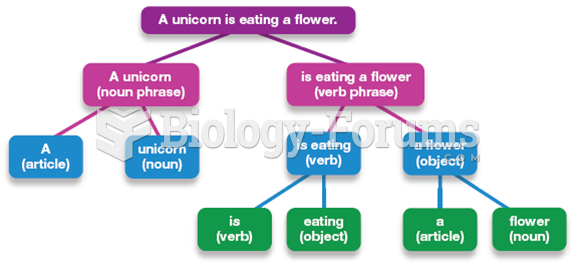|
|
|
The B-complex vitamins and vitamin C are not stored in the body and must be replaced each day.
The heart is located in the center of the chest, with part of it tipped slightly so that it taps against the left side of the chest.
As the western states of America were settled, pioneers often had to drink rancid water from ponds and other sources. This often resulted in chronic diarrhea, causing many cases of dehydration and death that could have been avoided if clean water had been available.
The immune system needs 9.5 hours of sleep in total darkness to recharge completely.
Walt Disney helped combat malaria by making an animated film in 1943 called The Winged Scourge. This short film starred the seven dwarfs and taught children that mosquitos transmit malaria, which is a very bad disease. It advocated the killing of mosquitos to stop the disease.







